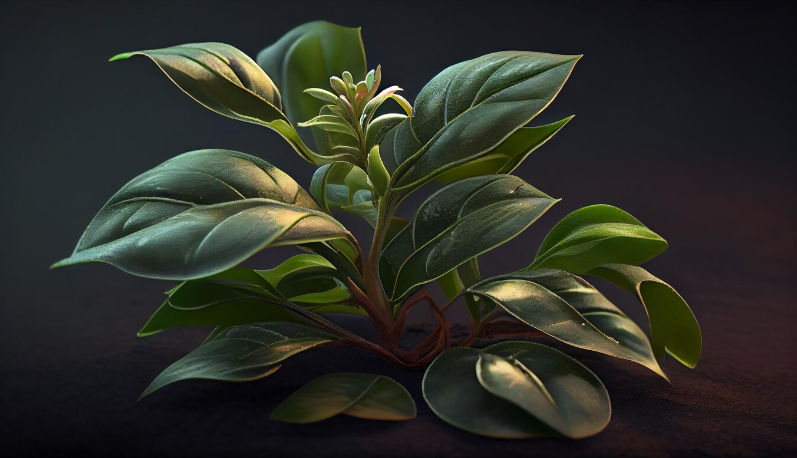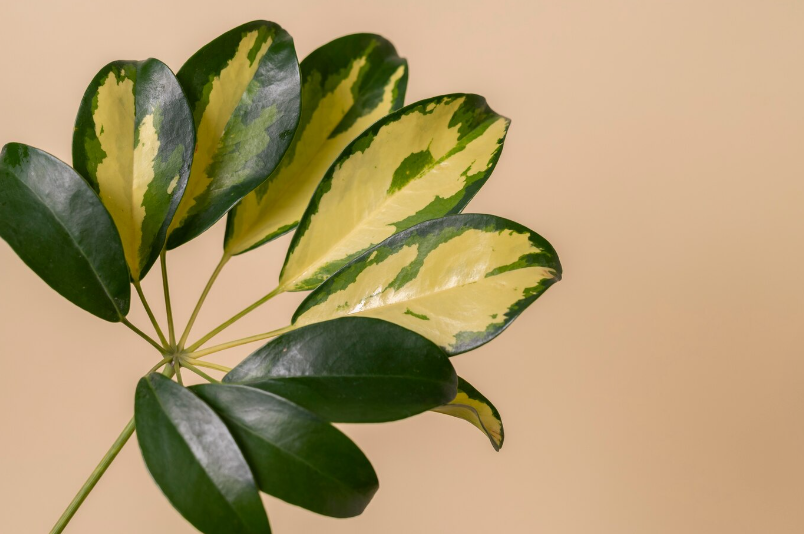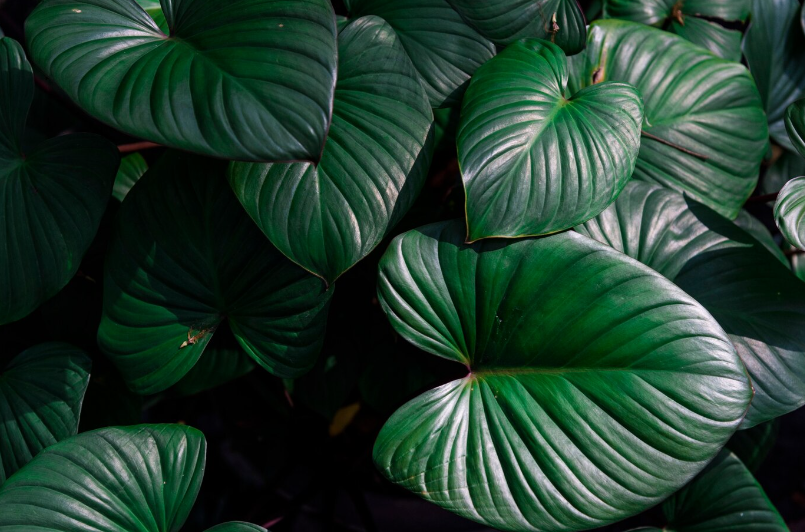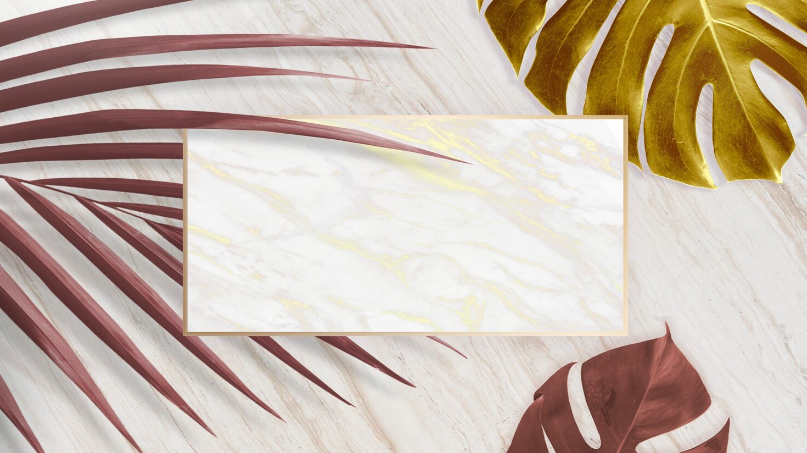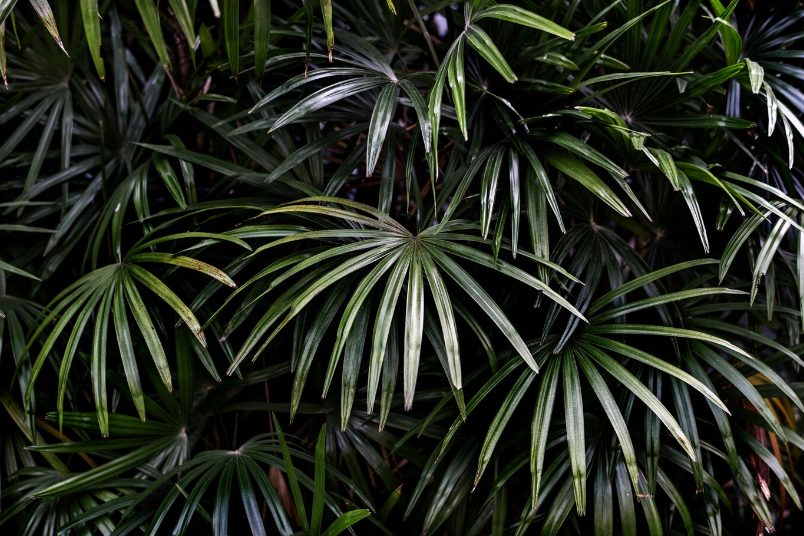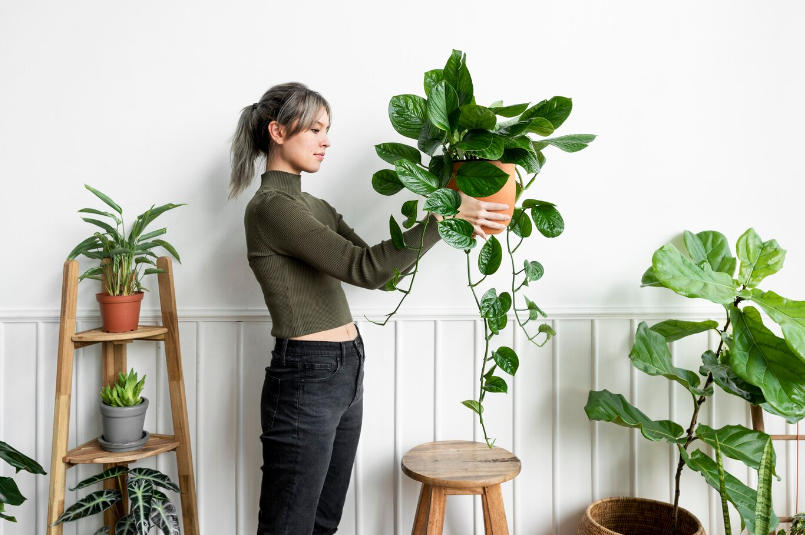Cultural Significance and Uses of Philodendrons Through the Ages
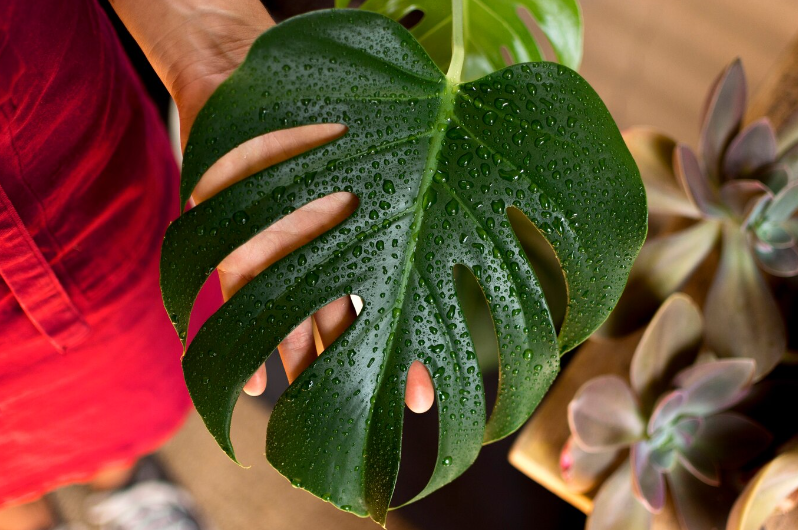
The philodendron plant holds a significant place in various cultures around the world and has been utilized for centuries for both practical and symbolic purposes. With its vibrant green leaves and ability to thrive in diverse environments, it has become a beloved plant among gardeners, collectors, and decorators alike. In this article, we will explore the cultural significance and diverse uses of philodendrons throughout history.
From ancient civilizations to modern-day societies, philodendrons have been cherished for their ornamental beauty and ability to purify the air. In many cultures, they symbolize fertility, growth, and abundance. Their lush foliage and sprawling vines have been employed in religious ceremonies, home decor, and medicinal practices.
In ancient Egypt, the philodendron was revered as a symbol of life and resurrection. It was often depicted in artwork and used as an offering to the gods. The Egyptians believed that the plant’s ability to thrive and regenerate represented the cycle of life and the afterlife.
In traditional Chinese medicine, certain species of philodendrons have been used for their healing properties. The leaves and roots are believed to possess medicinal qualities that can aid in digestion, reduce inflammation, and promote overall well-being. Today, these practices continue to be passed down through generations.
The philodendron has also played a role in modern interior design, adding a touch of natural beauty and vitality to homes and offices. Its cascading vines can be trained to climb walls or hang down from planters, creating a lush and serene atmosphere. Additionally, philodendrons are popular choices for tropical gardens and indoor greenhouses.
Whether for its aesthetic appeal or cultural significance, the philodendron continues to captivate people worldwide. Its versatility and adaptability have cemented its place both in history and in the hearts of those who appreciate the beauty of nature.
The Ancient Allure of Philodendrons
Since ancient times, philodendrons have captivated people with their beauty and versatility. These tropical plants were highly prized in ancient civilizations for their lush foliage and unique leaf shapes.
The allure of the philodendron can be traced back to ancient civilizations such as the Aztecs and the Incas, who considered these plants to be sacred. They believed that philodendrons possessed spiritual powers and used them for religious ceremonies and healing rituals.
Furthermore, philodendrons were used decoratively in ancient palaces and gardens to create a sense of natural beauty and tranquility. Their vibrant green leaves and trailing vines brought life and color to these spaces, making them a symbol of wealth and luxury.
Philodendrons also had practical uses in ancient times. Their leaves were used for medicinal purposes, as they were believed to have healing properties. Additionally, the vines of certain philodendron species were used to make ropes and nets, proving their versatility and usefulness.
Today, the ancient allure of philodendrons continues to captivate people. These plants are popular houseplants and are often used in interior design to add a touch of natural beauty to modern spaces. Their ability to thrive in various conditions and their air-purifying qualities make them a favorite among plant enthusiasts.
Philodendrons are not just plants; they are a link to our ancient past. Their beauty, versatility, and cultural significance make them a truly fascinating part of our history.
Unraveling Philodendron’s History in Tropical Cultures
The philodendron has a rich and fascinating history in tropical cultures, dating back centuries. Its lush green foliage and ability to thrive in diverse environments have made it an integral part of these cultures, both for its practical uses and its symbolic significance.
In ancient civilizations such as the Mayans and Aztecs, the philodendron was revered for its healing properties. It was believed to possess the power to ward off evil spirits and bring good luck to those who kept it in their homes. The leaves were often used in medicinal remedies to treat various ailments, showcasing the plant’s versatile nature.
Throughout history, the philodendron has also played a prominent role in religious ceremonies. In many tropical cultures, it is associated with fertility and abundance, and is often used as an offering to deities. Its vibrant green leaves symbolize life and vitality, and its ability to grow and spread quickly represents growth and prosperity.
Aside from its spiritual and cultural significance, the philodendron has practical uses in tropical climates. Its dense foliage provides shade and acts as a natural air purifier, making it a popular choice for landscaping and indoor gardens. Its ability to adapt to different light conditions and low-maintenance requirements also make it a favored plant for busy individuals who desire a touch of nature in their homes or offices.
The philodendron’s popularity continues to thrive in modern tropical cultures, as it remains a symbol of tropical beauty and tranquility. Its presence in homes, gardens, and public spaces serves as a reminder of the rich history and cultural heritage it represents.
In conclusion, the philodendron’s history in tropical cultures is deeply rooted in both practical and symbolic significance. From its ancient use in healing remedies to its role in religious ceremonies, this versatile plant has left an indelible mark on tropical cultures throughout the ages.
Philodendron Hederaceum: A Symbol Through Time
The Philodendron hederaceum, commonly known as the Heartleaf Philodendron, has long been a symbol of beauty, endurance, and vitality in various cultures throughout history. Its striking heart-shaped leaves and lush green foliage make it a beloved plant that has been cultivated and cherished for centuries.
In ancient times, the Philodendron hederaceum was revered by the Aztecs, who believed that its vibrant green color represented new life, fertility, and abundance. They often used the leaves of the plant in ceremonial rituals and decorations to honor their gods and bring good fortune.
During the Victorian era, the Philodendron hederaceum gained popularity as a symbol of everlasting love and devotion. It was often given as a gift to loved ones, signifying a lasting and deep affection. The plant was also commonly used in floral arrangements and wedding decorations, adding a touch of elegance and meaning to special occasions.
In modern times, the Philodendron hederaceum continues to hold cultural significance as a symbol of resilience and adaptability. Its ability to thrive in various environments, including low light conditions and neglect, has made it a favorite plant for busy individuals and urban dwellers. The Heartleaf Philodendron’s presence in homes and workspaces is believed to bring a sense of calmness, balance, and connection to nature.
Furthermore, the Philodendron hederaceum has also found its place in popular culture, often appearing in art, literature, and design. Its graceful vines and cascading leaves have inspired artists and designers to incorporate its form into their creations, symbolizing growth, exploration, and the interconnectedness of life.
Overall, the Philodendron hederaceum has transcended time and cultural boundaries, becoming a timeless symbol of beauty, love, resilience, and connection. Its rich history and widespread popularity serve as a testament to its enduring appeal and its ability to bring joy and meaning to the lives of those who cultivate and appreciate it.
The Role of Philodendrons in Indigenous Medicine
Throughout history, philodendrons have played a significant role in indigenous medicine practices. These versatile plants have been used by various indigenous cultures for their healing properties and have been an integral part of traditional medicine systems.
Indigenous communities have long recognized the therapeutic benefits of philodendrons and have utilized different parts of the plant for various medicinal purposes. The leaves, stems, and roots of philodendrons contain compounds that have been found to possess antimicrobial, anti-inflammatory, and analgesic properties.
One of the most common uses of philodendrons in indigenous medicine is the treatment of skin conditions. The sap extracted from the leaves of certain species, such as Philodendron bipinnatifidum, is believed to have soothing and healing effects on skin irritations, burns, and wounds. Indigenous healers often apply the sap topically or create poultices and ointments using the plant’s parts to alleviate symptoms and promote healing.
In addition to its dermatological applications, philodendrons have also been used to treat digestive issues. The root extract of some species is known to have astringent and carminative properties, making it useful for relieving symptoms of indigestion, diarrhea, and abdominal pain. Indigenous communities have traditionally prepared decoctions or infusions using the root extract and consumed it as a remedy for gastrointestinal ailments.
Furthermore, philodendrons have been utilized in the field of respiratory health. The steam from boiling the leaves or roots of certain philodendron species is often inhaled to alleviate symptoms of respiratory conditions, such as coughs, colds, and bronchitis. The plant’s expectorant properties help to clear the airways and promote easier breathing. Indigenous healers have incorporated these inhalations into their treatment regimens for centuries.
It is important to note that while philodendrons have been used in indigenous medicine for generations, their efficacy and safety should be further explored through scientific research. As with any medicinal plant, proper dosage and preparation methods are essential to ensure maximum benefits and minimize potential risks.
| Common Uses | Philodendron Species | Medicinal Properties |
|---|---|---|
| Skin Irritations, Burns, Wounds | Philodendron bipinnatifidum | Antimicrobial, anti-inflammatory, soothing |
| Indigestion, Diarrhea, Abdominal Pain | Various species (root extract) | Astringent, carminative |
| Coughs, Colds, Bronchitis | Various species (leaves, root extracts) | Expectorant |
Spiritual and Symbolic Meanings of Philodendrons
Philodendrons have held spiritual and symbolic meanings in various cultures throughout history. These meanings often revolve around concepts of growth, transformation, and connection with nature.
In many indigenous cultures, the philodendron is seen as a symbol of vitality and life force. Its ability to thrive in diverse environments and its rapid growth are often interpreted as signs of resilience and adaptability. The philodendron is believed to embody the spirit of the jungle, representing the cycle of life and the interconnectedness of all living beings.
In some spiritual practices, the philodendron is associated with purification and cleansing. Its large leaves are thought to absorb negative energies and promote positive energy flow, making it a popular choice for home decor and altar arrangements.
Additionally, the philodendron is often seen as a symbol of abundance and prosperity. Its lush foliage and vigorous growth are considered auspicious and are believed to attract wealth and good fortune. In Feng Shui, the philodendron is often placed in the wealth sector of a home or office to enhance financial wellbeing.
Furthermore, the heart-shaped leaves of the philodendron are often seen as symbols of love and affection. In some cultures, giving or receiving a philodendron as a gift is considered a gesture of romantic interest or deep affection.
Overall, the spiritual and symbolic meanings of philodendrons vary across different cultures and belief systems. However, their associations with vitality, growth, purification, abundance, and love are widely recognized and appreciated.
Philodendron’s Presence in Myth and Spirituality
Throughout history, the philodendron plant has held a significant place in various mythologies and spiritual practices. Its lush foliage and ability to thrive in diverse environments have captured the attention and imagination of people across cultures.
In ancient Greek mythology, the philodendron was associated with Bacchus, the god of wine and fertility. It was believed that the plant’s vibrant leaves symbolized abundance and growth, making it a popular choice for decorations during festivals and celebrations.
In Mayan culture, philodendrons were revered as sacred plants that connected humans to the spirit world. They were often used during religious ceremonies and rituals, believed to possess mystical powers and bring protection and good luck to those who cultivated them.
Across various indigenous cultures in South America, the philodendron holds a special place in spiritual practices. It is believed to be a conduit between the physical and spiritual realms, with its heart-shaped leaves representing the gateway to the soul. The plant is often used in purification rituals and as an offering to deities and ancestors.
In modern spirituality, the philodendron is often associated with healing and cleansing energies. Its ability to remove toxins from the air and improve indoor air quality has made it a popular choice for homes and workplaces. Many believe that having a philodendron plant in one’s space can enhance spiritual well-being and promote a sense of harmony and balance.
Whether in ancient mythology or contemporary spirituality, the presence of philodendrons has played an integral role in shaping cultural beliefs and practices. The plant’s beauty and symbolism continue to inspire awe and reverence, connecting us to the natural world and the deeper realms of our existence.
Heartleaf Philodendron: More Than Just A Plant
The Heartleaf Philodendron, scientifically known as Philodendron hederaceum, is a popular houseplant that has been cherished for its beauty and versatility for centuries. Although it is commonly referred to as just a plant, this botanical wonder has a rich cultural significance and multiple uses throughout history.
Native to the tropical regions of Central and South America, the Heartleaf Philodendron has been deeply intertwined with indigenous cultures. The plant’s heart-shaped leaves are believed to symbolize love and compassion, making it a popular gift for weddings and other special occasions. Additionally, the vibrant green color of the leaves is associated with growth, renewal, and the cycle of life.
Historically, the Heartleaf Philodendron has been used for its medicinal properties by indigenous tribes. The leaves were believed to have healing powers, and various parts of the plant were used to treat ailments such as skin infections, digestive issues, and respiratory problems. Today, modern medicine is exploring the potential health benefits of this plant, including its ability to purify indoor air and reduce stress.
In addition to its cultural significance and medicinal uses, the Heartleaf Philodendron has also made its mark in the world of interior design. Its lush green foliage and cascading vines make it a popular choice for adding a touch of nature to indoor spaces. The plant’s ability to thrive in low light conditions and adapt to a variety of environments has made it a beloved choice for both beginner and experienced plant enthusiasts.
| Uses of the Heartleaf Philodendron |
|---|
| 1. Ornamental Plant |
| 2. Air Purifier |
| 3. Stress Reducer |
| 4. Gift for Special Occasions |
| 5. Medicinal Uses |
Whether you admire it for its cultural significance, decorate your home with its beauty, or reap the potential health benefits it offers, the Heartleaf Philodendron is truly more than just a plant. It is a testament to the enduring relationship between humans and nature, and a reminder of the diverse ways in which plants enrich our lives.
Good Fortune and the Philodendron: Unpacking the Belief
Throughout history, the Philodendron plant has been associated with various beliefs and superstitions, one of them being good fortune. Many cultures across the globe believed that having a Philodendron in your home or workplace could bring luck and prosperity.
This belief stems from the lush and vibrant nature of the Philodendron plant itself. With its glossy leaves and vigorous growth, it represents abundance and vitality, which are often seen as signs of good fortune.
In some cultures, the positioning of the Philodendron within the home or workplace is believed to enhance its auspicious effects. Placing it near the entrance is thought to attract positive energy and opportunities, while putting it in the wealth corner of a room is believed to enhance financial prosperity.
Furthermore, the Philodendron’s ability to purify the air and remove toxins is another reason behind its association with good fortune. According to ancient beliefs, a clean and healthy environment is a prerequisite for attracting positive energy and good luck.
While the belief in the Philodendron’s power to bring good fortune may be rooted in superstition, there is no denying the positive impact that this plant can have on its surroundings. Whether it is through its aesthetic beauty or its air-purifying qualities, the Philodendron has become a symbol of prosperity and abundance in many cultures around the world.
The Intersection of Philodendrons and the Environment
Philodendrons have long been admired for their beauty and ability to thrive in various environments. However, their significance extends beyond aesthetics, as they play a vital role in the environment.
One of the key environmental benefits of philodendrons is their ability to purify the air. Through a process called photosynthesis, these plants absorb carbon dioxide and release oxygen, helping to clean the air we breathe. This makes them an excellent addition to indoor spaces, where air quality can sometimes be compromised.
In addition to improving air quality, philodendrons also contribute to the overall health of ecosystems. As they grow, these plants create a dense canopy that shades the ground, reducing soil temperature and preventing excessive evaporation. This helps to conserve water and maintain moisture levels, benefitting the plants and animals that inhabit the area.
Furthermore, many species of philodendrons are known for their ability to adapt and thrive in a variety of climates. This resilience makes them valuable in reforestation efforts and habitat restoration projects. By introducing philodendrons into ecosystems that have been damaged or degraded, we can help restore balance and promote biodiversity.
Philodendrons also have cultural and spiritual significance in some societies. In certain traditions, they are considered symbols of fertility, growth, and abundance. They are often used in rituals and ceremonies to promote harmony with nature and to honor the natural world.
In conclusion, philodendrons are not just beautiful houseplants – they are integral to the environment and have a long history of cultural significance. From their air-purifying capabilities to their role in ecosystem health, philodendrons continue to play a crucial role in sustaining and enriching our world.
Ecological Impact: Philodendron’s Role in Ecosystems
The Philodendron plant, with its lush foliage and unique aerial roots, plays an important role in various ecosystems around the world. Its ecological impact extends beyond its aesthetic appeal, as it provides numerous benefits to both the environment and other organisms within its habitat.
One of the key ecological benefits of Philodendrons is their ability to improve air quality. Like other plants, Philodendrons release oxygen and absorb carbon dioxide through the process of photosynthesis. This helps to reduce greenhouse gases and improve the overall air quality in the surrounding environment.
In addition to their air-purifying properties, Philodendrons also serve as habitat and food sources for various organisms. The dense foliage of these plants provides shelter and nesting sites for small animals and insects. The stems and leaves of Philodendrons also offer a source of nourishment for herbivorous animals, such as insects and some small mammals.
Furthermore, Philodendrons play a crucial role in the water cycle of ecosystems. The large surface area of their leaves enables them to capture and retain moisture, preventing excessive evaporation and helping to regulate humidity levels. This is especially important in tropical rainforests where Philodendrons are often found, as they help to maintain the overall moisture and temperature balance of the ecosystem.
In some cases, Philodendrons are considered invasive species, particularly in areas outside their native range. When introduced to new ecosystems, these plants can outcompete native flora and disrupt the natural balance of the ecosystem. This highlights the importance of responsible cultivation and management of Philodendron species to prevent negative ecological impacts.
In conclusion, Philodendrons have a significant ecological impact on the ecosystems they inhabit. From improving air quality and providing shelter and food for various organisms, to regulating moisture levels and maintaining ecosystem balance, these plants play a vital role in the overall health and function of ecosystems.
Philodendron Xanadu: An Environmental Utility
The Philodendron Xanadu is a species of philodendron that has become increasingly popular for its environmental benefits. This compact, low-maintenance plant is not only a striking addition to any indoor or outdoor space, but it also offers a range of practical uses that make it a valuable asset.
One of the key environmental benefits of the Philodendron Xanadu is its ability to enhance air quality. Like other plants, it absorbs carbon dioxide and releases oxygen through a process called photosynthesis. The Xanadu’s broad, shiny leaves also trap and remove airborne pollutants such as formaldehyde, benzene, and xylene. This makes it an excellent choice for improving indoor air quality in homes, offices, and other enclosed spaces.
In addition to its air-purifying properties, the Philodendron Xanadu can also help to regulate humidity levels. Its large leaves release moisture into the surrounding air, creating a more comfortable and healthy environment. This can be particularly beneficial in dry or air-conditioned spaces where humidity levels may be low.
Furthermore, the Philodendron Xanadu has been found to have a calming effect on individuals. Studies have shown that having plants, such as the Xanadu, in indoor spaces can help reduce stress, increase productivity, and improve overall well-being. Its lush foliage and graceful silhouette can create a sense of tranquility and provide a connection to nature, even in urban environments.
Another interesting use of the Philodendron Xanadu is its potential to mitigate noise pollution. The plant’s thick leaves and dense growth pattern can help absorb and muffle sounds, making it an effective natural sound barrier. This makes it an ideal choice for creating privacy in gardens or reducing noise levels in busy urban areas.
In conclusion, the Philodendron Xanadu is not only a visually appealing plant but also a practical asset for enhancing the environment. Its ability to improve air quality, regulate humidity, reduce stress, and mitigate noise pollution make it a valuable addition to any space. Whether it is used in homes, offices, or public spaces, the Xanadu offers numerous benefits that contribute to a healthier and more enjoyable environment.
Philodendrons as Natural Air Purifiers: Fact or Myth?
One of the most popular claims about philodendrons is their ability to purify the air in our homes and offices. It has long been believed that these tropical plants have the power to remove toxins and improve air quality. But is there any scientific evidence to support this idea or is it just a myth?
While it is true that philodendrons are known for their broad leaves, which have been shown to help filter and capture airborne particles, the extent to which they can purify the air is still up for debate. Some studies have suggested that philodendrons can indeed remove certain pollutants, such as formaldehyde, from the air. However, other research has found that the effect may be minimal and that additional air circulation and ventilation are still necessary for truly clean indoor air.
One factor that complicates the matter is the vast array of different species and cultivars of philodendrons. Each variety may have slightly different abilities when it comes to air purification. Additionally, factors such as light levels, temperature, and humidity can also affect a plant’s ability to remove airborne pollutants. Therefore, it is important to consider these variables when considering the use of philodendrons as air purifiers.
| Pros | Cons |
|---|---|
| Philodendrons have broad leaves that can help filter and capture airborne particles | The extent of their air purifying abilities is still debated |
| Some studies suggest they can remove certain pollutants from the air | Additional air circulation and ventilation may still be necessary for clean indoor air |
| They come in a variety of species and cultivars, each with potentially different abilities | Factors such as light, temperature, and humidity can affect their air purifying abilities |
In conclusion, while philodendrons may have some air purifying properties, their effectiveness in this regard is still a topic of debate. It is important to remember that maintaining proper air circulation and ventilation is crucial for maintaining clean indoor air, regardless of whether or not you have philodendrons in your space.
The Unique Features and Rarity of Philodendrons
Philodendrons are a group of tropical plants known for their unique features and rarity. These plants belong to the family Araceae and are native to the rainforests of Central and South America. They have become popular houseplants due to their attractive foliage and ability to thrive in indoor environments.
One of the unique features of philodendrons is their large, glossy leaves. These leaves can come in various shapes, including heart-shaped, arrow-shaped, and split leaves. The vibrant green color and shiny texture of the leaves make them stand out in any setting.
Another distinguishing feature of philodendrons is their aerial roots. These roots can grow from the stem of the plant and reach out towards the ground or nearby objects for support. This adaptation allows philodendrons to climb on trees or walls in their natural habitats.
Philodendrons come in different sizes, ranging from compact varieties suitable for small spaces to large species that can reach several meters in height. The size and growth pattern of philodendrons make them versatile for interior design, as they can be used as hanging plants, wall climbers, or potted plants.
Despite their popularity as houseplants, some species of philodendrons are considered rare. This rarity can be due to their limited distribution in the wild or difficulties in cultivation. Rare philodendrons are highly sought after by collectors and plant enthusiasts, often fetching high prices in the market.
In conclusion, philodendrons possess unique features that set them apart from other plants. Their large, glossy leaves, aerial roots, and versatile growth patterns make them visually appealing and adaptable in various settings. The rarity of some philodendron species adds to their allure, making them highly desirable among plant lovers.
Discovering the Rarest Varieties of Philodendrons
The world of philodendrons is vast and diverse, with countless varieties to explore. Among all these stunning plants, some stand out for their rarity and beauty. In this article, we will take a closer look at some of the rarest philodendron varieties that collectors and enthusiasts seek to add to their collections.
One of the rarest varieties is the Philodendron ‘Pink Princess.’ With its unique variegation of dark green leaves and pink pinstripes, it is a true gem for any plant collector. The ‘Pink Princess’ is highly sought after and often commands high prices due to its scarcity. It requires specific care to maintain its vibrant colors, making it a challenging but rewarding plant to grow.
Another coveted variety is the White Knight Philodendron.
With its striking white and silver variegation, it is a favorite among collectors. The ‘White Knight’ is known for its velvety leaves and low-maintenance nature, making it an excellent choice for both experienced growers and beginners looking to add a touch of elegance to their indoor jungle.
For those who appreciate rare and unusual foliage, the Philodendron ‘Imperial Green’ is a must-have. This variety features large, glossy leaves with intricate patterns in shades of green. The ‘Imperial Green’ is relatively hard to find, making it a valuable addition to any philodendron collection. It thrives in bright, indirect light and regular watering.
If you’re looking for a philodendron variety that combines rarity and unique coloration, the Philodendron ‘Painted Lady’ is worth considering. With its vibrant pink and green foliage, it is sure to add a pop of color to any room. The ‘Painted Lady’ requires bright, indirect light to maintain its colorful hues and prefers well-draining soil.
Lastly, the Philodendron ‘Black Cardinal’ is a highly sought-after variety known for its dark purple and almost black leaves. This stunning plant is relatively rare and can be a challenge to find. Its dark foliage creates a dramatic contrast against other plants and adds a touch of elegance to any space. The ‘Black Cardinal’ thrives in medium to bright indirect light and requires regular watering.
These rare varieties of philodendrons are highly sought after by enthusiasts and collectors alike. Their uniqueness and beauty make them coveted additions to any plant collection. Whether you’re a seasoned collector or just starting, exploring these rare varieties can open up a whole new world of philodendron appreciation.
Sexual Dimorphism in Philodendrons: Understanding Male and Female Plants
In the world of plants, sexual dimorphism refers to the differences in physical characteristics between male and female individuals of the same species. Philodendrons, a genus of tropical climbing plants, also exhibit sexual dimorphism in their reproductive structures.
Male and female philodendron plants can be differentiated by their flowers. Male philodendrons produce inflorescences that contain numerous stamens, the male reproductive organs, while female philodendrons produce smaller inflorescences with a single pistil, the female reproductive organ.
Phenotypically, male philodendrons often have larger and more vibrant flowers compared to their female counterparts. This reproductive dimorphism is thought to have evolved as a strategy to attract pollinators. The showier appearance of male flowers may be more appealing to insects and birds, which can inadvertently assist in the pollination process.
While male philodendrons play a crucial role in pollination, it is the female plants that ultimately produce the fruit. After successful pollination, the pistil develops into a seed-producing ovary. The fruit, known as a drupe, contains a single seed and is often brightly colored to attract animals that will consume it and disperse the seeds.
Understanding the sexual dimorphism in philodendrons is not only fascinating from a botanical perspective but also highlights the complex strategies that plants have developed for reproduction and survival in their respective ecosystems. Further studies on the genetic and environmental factors that influence sexual dimorphism in philodendrons can provide valuable insights into the evolution and adaptation of this diverse group of plants.
Philodendron Birkin: A Modern Cultivation Wonder
One of the most sought-after plants in recent years, the Philodendron Birkin has taken the horticultural world by storm with its unique appearance and easy cultivation.
Named after the renowned fashion designer, Birkin, this stunning philodendron variety features dark green leaves streaked with bright white pinstripes, resembling a fashionable attire.
The Philodendron Birkin is native to the tropical rainforests of South America and belongs to the Araceae family, which includes other popular houseplants like the Monstera and Anthurium.
This modern cultivar is known for its compact size, making it a perfect choice for indoor gardening. It thrives in bright, indirect light and prefers well-draining soil to prevent waterlogging.
One of the key features of the Philodendron Birkin is its adaptability to various environments. It can tolerate low-light conditions, but its variegation becomes less prominent. On the other hand, when exposed to brighter light, its white stripes become more vibrant.
Philodendron Birkin’s easy cultivation has made it a favorite among plant enthusiasts, both beginners and experienced gardeners alike. Its ability to adapt to different light conditions and its striking appearance make it a versatile and attractive addition to any plant collection.
To propagate a Philodendron Birkin, one can use stem cuttings. Cut a healthy stem just below a node and place it in water or well-draining soil. With proper care and ideal conditions, the cutting will develop roots and grow into a new plant.
As with other Philodendron varieties, the Birkin also acts as an air purifier, removing harmful toxins from the air and improving indoor air quality.
In conclusion, the Philodendron Birkin is a modern cultivation wonder that has captured the attention of plant lovers worldwide. Its unique appearance, adaptability, and ease of propagation have solidified its place as a must-have houseplant for both aesthetic and practical reasons.
Modern Perspectives and Practices with Philodendrons
In recent years, the popularity of philodendrons as houseplants has skyrocketed. With their beautiful foliage and low maintenance requirements, philodendrons have become a staple in many households, adding a touch of greenery to indoor spaces.
One of the reasons why philodendrons have gained so much attention is their ability to purify the air. These plants have been found to remove toxins such as formaldehyde and benzene from the air, making them a natural and effective air filter.
Additionally, philodendrons are highly adaptable and can thrive in a variety of conditions. They can withstand low light levels and neglect, making them an ideal choice for busy individuals or those who have less-than-optimal lighting in their homes.
Another modern practice with philodendrons is their use in urban gardening and green infrastructure. As cities become more crowded and space becomes limited, people are turning to philodendrons and other houseplants to create living walls, rooftop gardens, and indoor vertical gardens. These green spaces not only add beauty to urban environments but also provide numerous environmental benefits, such as reducing heat island effects and improving air quality.
Furthermore, philodendrons have also found their way into the world of art and design. Their unique leaf shapes and patterns have inspired many artists and designers, who incorporate them into their creations. Whether it’s botanical illustrations, fabric prints, or jewelry designs, philodendrons have become an iconic symbol of nature and beauty.
In conclusion, philodendrons have transitioned from being mere ornamental plants to multifunctional and versatile assets in the modern world. They not only bring aesthetic appeal to indoor spaces but also contribute to improved air quality, urban greenery, and artistic endeavors.
The Economy of Philodendrons: Why Prices Soar
Philodendrons have become a booming industry over the past few years, with prices skyrocketing for certain rare and highly sought-after varieties. There are several factors that contribute to this phenomenon, making philodendrons a valuable commodity in today’s market.
One reason for the high prices of philodendrons is their growing popularity among collectors and enthusiasts. Philodendrons are known for their unique foliage and diverse range of colors, shapes, and patterns. The growing demand for these plants has created a competitive market, driving up prices for rare and unusual specimens.
Another factor that influences the economy of philodendrons is their slow growth rate. Many philodendron varieties take years to reach their full size, making them relatively rare and expensive. This slow growth also adds to the allure of philodendrons, as they are seen as a long-term investment for plant lovers who are willing to wait for their prized specimens to mature.
The scarcity of certain philodendron species also contributes to their high prices. Some varieties are native to specific regions or have specific environmental requirements, making them difficult to cultivate on a large scale. As a result, these rare philodendrons can command top dollar in the marketplace.
Lastly, the rise of social media and the influencer culture has played a significant role in driving up prices for philodendrons. As more people share their plant collections online, the desire to own unique and trendy philodendron varieties has increased. Influencers and celebrities showcasing their philodendrons have fueled the market demand and added to the hype surrounding these plants.
In conclusion, the economy of philodendrons is a complex web of factors that contribute to their high prices. Growing popularity, slow growth, scarcity, and the influence of social media all play a role in driving up the value of these plants. As long as there is demand for rare and unique philodendrons, the prices will continue to soar in the market.
The Philodendron Cordatum’s Spiritual Connection in Contemporary Times
The Philodendron cordatum, also known as the heart-leaf philodendron, has a significant spiritual connection in contemporary times. Throughout history, various cultures have revered plants for their spiritual and symbolic significance, and the Philodendron cordatum is no exception.
In many spiritual traditions, the heart-shaped leaves of the Philodendron cordatum are believed to represent love, compassion, and emotional healing. The plant is often associated with the heart chakra, the energy center of love and compassion in the body. By incorporating the Philodendron cordatum into their surroundings, individuals aim to cultivate an atmosphere of love, acceptance, and emotional well-being.
One way the Philodendron cordatum’s spiritual connection is expressed in contemporary times is through its use in meditation spaces and sacred rituals. Its lush green leaves are believed to enhance the spiritual experience and create a sense of calm and tranquility. When placed in meditation rooms or altars, the plant is seen as a symbol of spiritual growth and a reminder of the interconnectedness of all living beings.
Moreover, the Philodendron cordatum’s spiritual connection is further emphasized by its ability to purify the air and create a harmonious environment. Plants, in general, are known to improve indoor air quality by removing toxins and releasing oxygen. This purifying quality enhances the spiritual energy of a space, making it more conducive to meditation, prayer, and spiritual practices.
| Symbolic Connections | Spiritual Associations |
|---|---|
| Love | Heart chakra |
| Compassion | Spiritual growth |
| Emotional healing | Interconnectedness |
In conclusion, the Philodendron cordatum’s spiritual connection in contemporary times is deeply rooted in its symbolism, associations with love and compassion, and its ability to create a harmonious and purified environment. Whether used in personal meditation practices or as a decorative addition to sacred spaces, the Philodendron cordatum continues to play a significant role in the spiritual lives of many individuals.
Philodendron Golden Goddess: A Trendsetter in Houseplant Fashion
The Philodendron Golden Goddess, with its striking variegated leaves, has taken the world of houseplants by storm. This trendy plant has quickly become a must-have for plant enthusiasts and interior designers alike.
With its lush green foliage and splashes of golden yellow, the Golden Goddess adds a touch of elegance and sophistication to any space. Its vibrant colors and trailing vines make it a perfect choice for hanging baskets or cascading over shelves.
Not only is the Golden Goddess visually stunning, but it also offers numerous benefits as a houseplant. Like other philodendrons, it is highly effective in purifying the air by removing toxins and improving indoor air quality. It is also a low-maintenance plant, making it ideal for those with a busy lifestyle.
This particular cultivar, the Golden Goddess, is a unique variety of philodendron that stands out from the crowd. Its distinctive coloration sets it apart from other philodendron varieties and makes it a focal point in any room.
As with many houseplant trends, the popularity of the Golden Goddess can be attributed to social media. Instagram influencers and plant enthusiasts have flooded their feeds with photos of this stunning plant, sparking a desire in others to add it to their own collections.
The Golden Goddess has become a trendsetter in houseplant fashion, capturing the hearts of plant lovers worldwide. Its beauty, ease of care, and social media presence have solidified its place as a must-have plant for any indoor jungle.
Questions and answers:
Why are philodendrons considered culturally significant?
Philodendrons are considered culturally significant because they have been used in various ancient civilizations for their healing properties, as well as their aesthetic value. They have also been associated with symbolism and folklore in different cultures.
How have philodendrons been used in ancient civilizations?
Philodendrons have been used in ancient civilizations for their medicinal properties. They were believed to have healing powers and were used to treat ailments such as digestive disorders, skin conditions, and respiratory issues. Additionally, philodendrons were often used as decorative elements in temples and palaces.
What are some cultural symbols associated with philodendrons?
Philodendrons have been associated with different cultural symbols throughout history. In some cultures, they are a symbol of fertility and abundance due to their lush foliage. In other cultures, they are seen as a symbol of strength and endurance because of their ability to grow in demanding conditions.
What are some modern uses of philodendrons?
In modern times, philodendrons continue to be appreciated for their aesthetic value and are commonly used as houseplants. They are known for their ability to purify indoor air by removing harmful toxins. Additionally, due to their adaptability and low maintenance requirements, philodendrons are popular choices for offices and public spaces.
